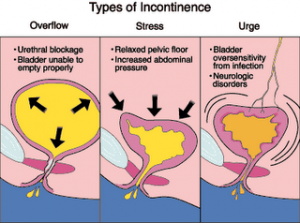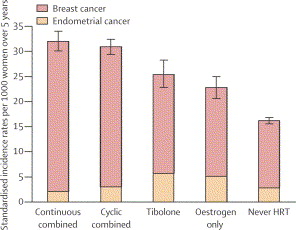In many previous blogs I have mentioned that bioidentical hormone replacement prolongs life. Here is a more detailed look at what such hormone replacement looks like for both women and men. Before I get into details I want to stress that I am talking about replacing what is missing and replacing only with natural hormones, not some artificial hormone derivative produced by a drug company. The reason this is immensely important is that hormone receptors in the body are distributed all over our vital organs including bones, blood vessels and the nervous system. If there is no lock and key fit (bio-identical hormone fitting the hormone receptor), there is trouble as the Women’s Health Initiative in 2002 has shown. Unfortunately they had used synthetic hormones for HRT that were not fitting the hormone receptors, and this caused many problems (heart attacks, strokes, osteoporosis, cancer).
Physiology of aging
As we age, we gradually produce fewer hormones in our hormone glands, but the various hormone glands deteriorate in their functions at different rates. Beyond the age of 30 we produce less melatonin and less growth hormone. As a result our sleep pattern may change, as melatonin is necessary for a deep sleep. The decreasing growth hormone production means that we are losing some of our muscle mass and accumulate more fat in the subcutaneous tissues. Our adrenal glands produce less DHEA at the age of 35 to 40, a hormone that is a precursor to our sex hormones in males and females. The gonads (testicles and ovaries) also produce fewer hormones, a process which already starts 5 years before menopause and about 5 years before andropause (the male menopause equivalent).
Typically a woman will get into menopause at the age of 45 to 55 at which time the periods stop and postmenopausal symptoms are interfering with her well-being. Men get into andropause (the male equivalent of menopause) at the age of 55 to 65 at which time erectile dysfunction occurs and often the individual will become the “grumpy old man”.
Other hormones such as thyroid hormones are also affected by the slow down. Hypothyroidism is common in people above the age of 50.
Baseline laboratory tests
In order to know what is going on, the physician or naturopath needs to order a number of tests to assess whether there is inflammation, how your key hormone levels are; the cardiovascular system markers should also be checked, the liver enzymes and vitamin D3 level. Inflammatory markers are fasting insulin levels and C-reactive protein (CRP). Fasting cholesterol and subfractions (HDL, LDL, VDLP, small LDL) and fasting triglycerides are also measured. Thyroid hormones (T3 and T4, TSH) are measured to rule out over or under function. Typically hypothyroidism is found, which would have to be rectified by taking Armour (a mix of T3 and T4 thyroid hormones).
At this point I need to explain that long time ago the research by Dr. Lee has shown that progesterone hormone levels are notoriously unreliable when blood tests are done. All of the other sex hormones, and cortisol are also not that reliable with blood tests. For this reason the saliva hormone tests have been invented that conveniently report a panel of 5 hormones from one saliva sample: DHEAS (which is the storage form of DHEA), estradiol (the major estrogen in a woman), progesterone, testosterone and cortisol. The saliva hormone tests correlate very well with the actual tissue hormone levels. You can order the saliva tests through Dr. Lee’s website. Another longstanding lab in the US is Dr. David Zava’s lab. In Canada the Rocky Mountain Analytical Lab can process your saliva tests.
Women’s hormone replacement
Let us assume that a woman is getting postmenopausal symptoms and bioidentical hormone replacement is being discussed. The physician will want to first rule out that insulin resistance is not present by ordering a fasting insulin level. If this is normal and the other baseline tests are normal as well except for missing estrogen and progesterone, the physician will usually start to replace progesterone first using a bioidentical hormone cream to be applied once or twice per day. If estrogen levels were also low, the next step in 4 weeks or so is to add Bi-Est, a bioidentical estrogen replacement cream. After 8 weeks of hormone replacement the saliva hormone test is repeated to see whether the estrogen and progesterone levels have come up and also, whether the ratio of progesterone to estrogen is at least 200 or more. Dr. Lee has extensively researched this and found that women with a ratio of less than 200 to 1 (progesterone/estrogen ratio) were more prone to breast cancer. He also stated in this link that there are 3 basic rules with regard to bioidentical hormone replacement:
1. only replace hormones, when they were measured to be low.
2. use only bioidentical hormones (never synthetic hormones) and
3. only replace with low doses of bioidentical hormones to bring hormone levels to physiological levels (body levels that were experienced to be normal before).
Many women who are not replaced in menopause have estrogen dominance meaning that the progesterone/estrogen ratio is less than 200:1, which puts these women at risk of developing breast cancer. Women who are overweight or obese also are estrogen dominant (from estrogen produced in excess through aromatase in the fatty tissue, explained further below), which makes them more prone to breast cancer, uterine cancer and colon cancer. Without bioidentical hormone replacement inflammatory processes take place in the joints (causing arthritis), in the nervous system (causing Alzheimer’s and dementia) and in the blood vessels (causing heart attacks and strokes). Rebalancing your hormones to a youthful state by paying attention to the hormone levels and the hormone ratios mentioned will remove the inflammatory reactions and reduce the risk for cancer.
Men’s hormone replacement
Males enter andropause 10 to 15 years later than women are entering menopause. Typically testosterone production slows down leading to hair loss, erectile dysfunction, loss of muscle mass, osteoporosis and Alzheimer’s/dementia. Blood tests (bioavailable testosterone) or saliva tests are both reliable in determining a deficiency. Replacement with bioidentical hormone creams once per day is the preferred method of treatment. Overweight and obese men produce significant amounts of estrogen through an enzyme localized in fatty tissue, called aromatase.
Aromatase converts testosterone and other male type hormones, called androgens, into estrogen. Estrogen causes breast growth, weakens muscles, and leads to abdominal fat accumulation, heart disease and strokes.
Similar to women, where the progesterone/estrogen ratio is important, there is another ratio for men, called testosterone/estrogen ratio. This should be in the 20 to 40 range for a man to feel good and energetic. Unfortunately many men above the age of 55 have testosterone/estrogen ratios much smaller than 20. This makes them more prone to heart disease and prostate cancer (Ref.1).
However, a male also does need a small amount of estrogen and normal thyroid hormones as well as all of the other hormones for his “hormonal symphony” (mentioned in Ref. 2) to function at his best.
Safety of hormone replacement
There are still otherwise reputable websites that state that bioidentical hormones are not safer than standard synthetic hormones. This confuses the consumer and does not serve the public well. I much prefer the text of the Wikipedia, which is a more thorough review regarding safety of hormone replacement and explains what the issues are.
In the US there is a collective experience of about 25 years on thousands of patients, but there have not been any randomized studies, as Big Pharma that would have the money to finance such studies is not interested in proving that bioidentical drugs would be safer than their distorted synthetic hormone copies that will not fit the body’s hormone receptors. There are some noble exceptions as Big Pharma is producing bioidentical insulin and human growth hormone that had toxicity studies done and showed safety. In Europe bioidentical hormones have been used since the 1960’s, on a larger scale since the 1970’s. So the European experience of safety of bioidentical hormones is presently about 40 to 50 years.
The FDA is contributing to the confusion of the public as can be seen from this publication. One example where the FDA is confusing the consumer, is the progesterone product Prometrium, a bioidentical micronized progesterone capsule that can be taken by mouth. By law the manufacturer had to put a warning label on the package identical to progestin, which is the synthetic, non-bioidentical hormone having been shown to have severe side effects. As is explained in this last publication Prometrium should not have been required to have a warning label in it ; the paper explains what I have already stated above, namely that bioidentical hormones are the safest form of hormone replacement and administered in the right ratios will actually prevent cancer and prevent premature cardiovascular and joint deterioration. In other words, bioidentical hormone replacement can add many years of useful life when started early enough before permanent organ damage sets in from the aging process (which would be due to missing hormones).
Why bother about hormone replacement?
Nature has a plan of “knocking us off” to make room for the next generation. The only way that you can change nature’s plan of killing us prematurely through cardiovascular disease, arthritis, dementia and loss of your sexual life is by bioidentical hormone replacement. Of course you also need the other ingredients of known life prolongers such as healthy (preferably organic) foods, exercise and detoxification. Many women are scared to treat the hormone deficiencies that cause their menopausal symptoms because of the Women’s health Initiative results with synthetic hormones. Men who would benefit from testosterone are often anxious that they may get prostate cancer, when in reality it is the exact opposite: testosterone prevents prostate cancer (Ref.3).
Conclusion
I wrote this blog about bioidentical hormone replacement in order to clarify this often-misunderstood topic. Don’t get confused by the FDA, by highbrow medical websites (such as the likes I mentioned). Big Pharma has a powerful lobby that attempts to keep the medical profession in the belief that their products are better than those that nature has provided (I call it “defend your patent rights”). We are still in a flux state where anybody who tells the truth about hormones gets much criticism. In another few decades it will be an accepted fact and people will wonder why the Women’s Health Initiative was done without a control with bioidentical hormones. With bioidentical hormone replacement you can add about 20 years of youthful life without disabilities to the normal life expectancy. Exercise, detoxification and organic food with avoidance of wheat, starch and sugar can add another 5 to 10 years to your life. The baby boomers are lucky that they have this new tool to prolong life. I wonder whether they will put it to good use.
More information about bioidentical hormone replacement: http://nethealthbook.com/hormones/anti-aging-medicine-women-men/
References:
1. John R. Lee: “Hormone Balance for Men – What your Doctor May Not Tell You About Prostate Health and Natural Hormone Supplementation”, © 2003 by Hormones Etc.
2. Suzanne Somers: “Breakthrough” Eight Steps to Wellness– Life-altering Secrets from Today’s Cutting-edge Doctors”, Crown Publishers, 2008
3. Abraham Morgentaler, MD “Testosterone for Life – Recharge your vitality, sex drive, muscle mass and overall health”, McGraw-Hill, 2008
Last edited Nov. 7, 2014









